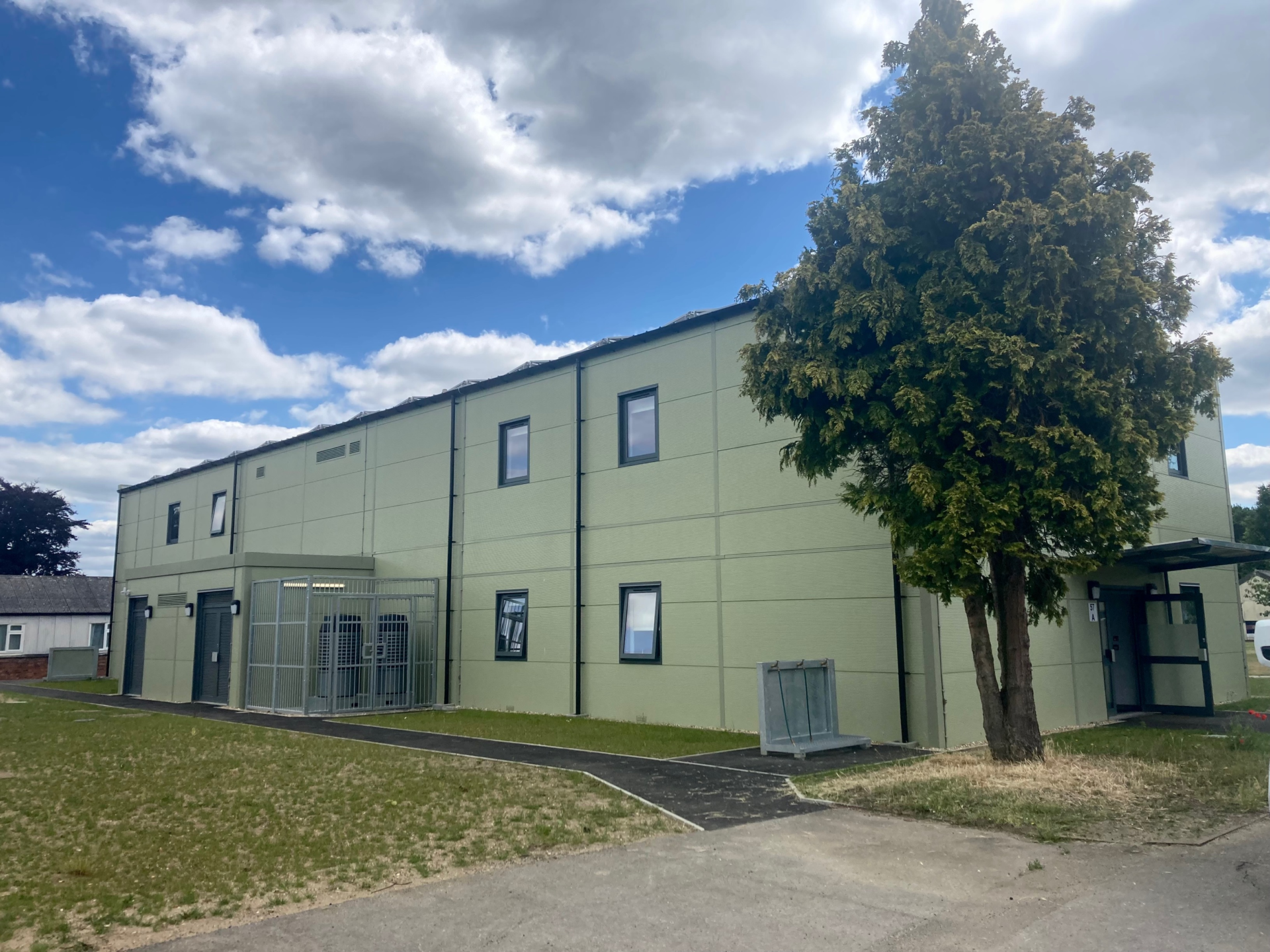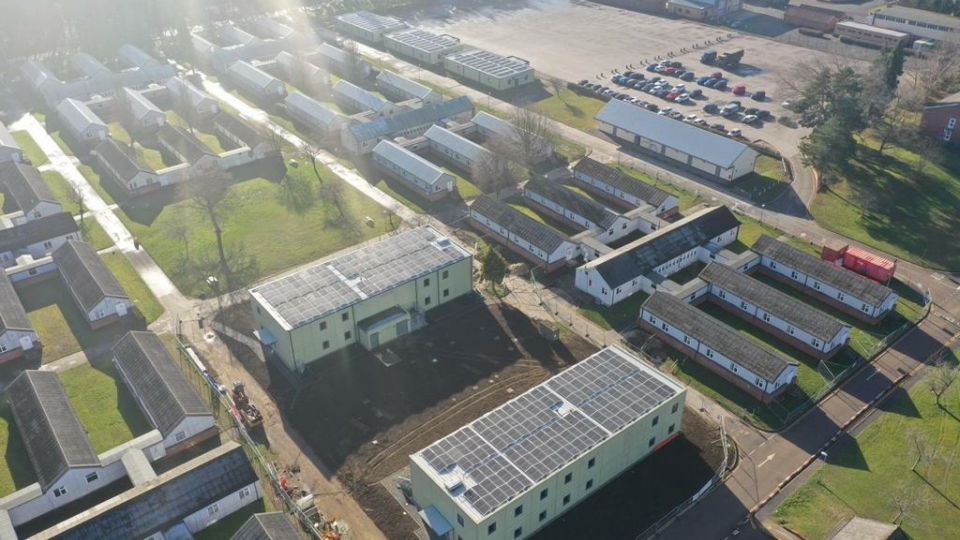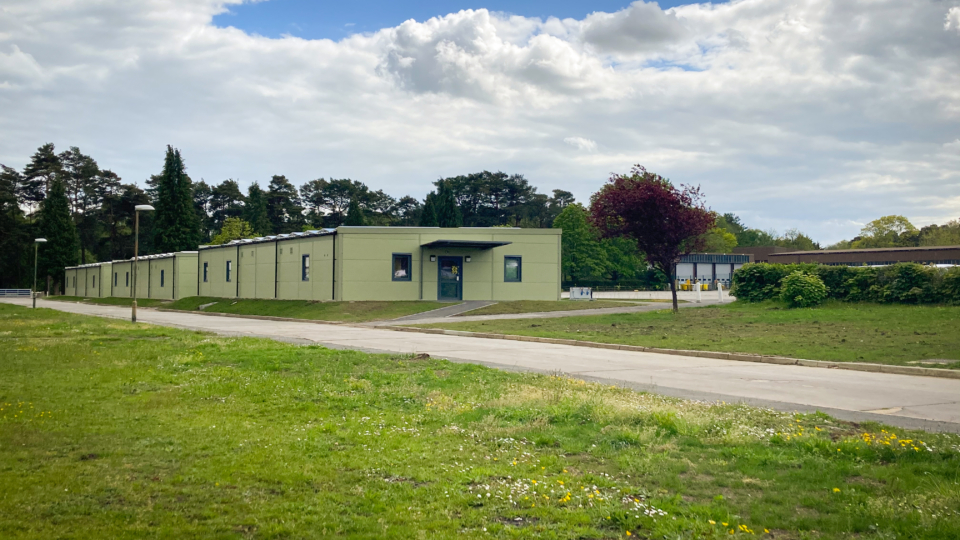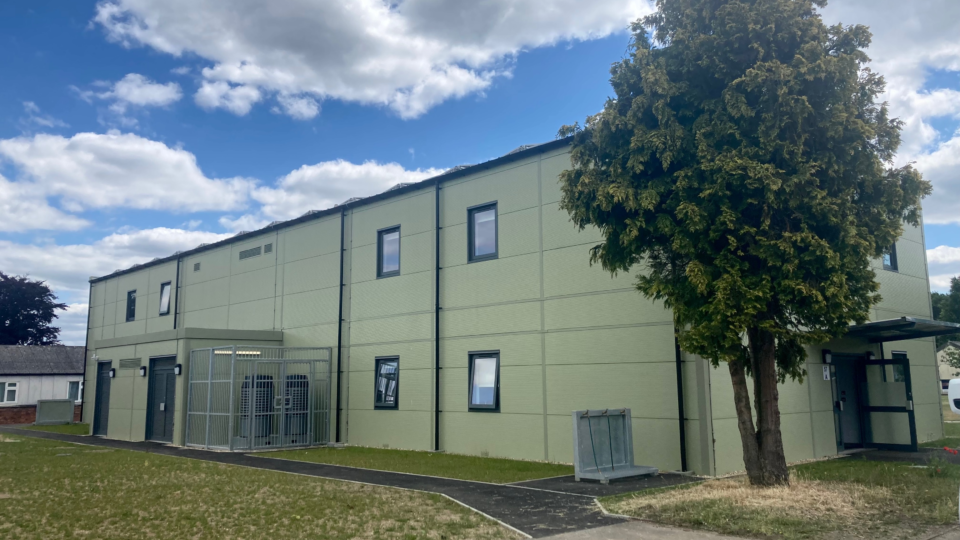
The MOD set an ambition target to Reds10 and Design ID to undertake the design of two double storey accommodation modular structures and foundations for the Net Carbon Accommodation Programme (NetCAP) at Brunswick Training Camp. The programme is part of the UK Government’s net-zero 2050 target to decarbonise the built environment.
Design ID worked closely with Reds10 to develop architectural layouts comprising of modular bays to cater for the cadet’s needs, providing open plan and closed spaces for varying dormitory sizes plus dryer room and shower facilities. The buildings can be split into two separate areas to support the needs of different groups simultaneously.
Sustainability
Incorporating sustainable building materials into the project was vital. The design of light gauge steel modular frames to lower steel tonnages with timber ceiling joists further reducing the embodied carbon. Design ID challenged the design loads outlined in the initial brief to justify reduced imposed loads based on the floor usage. This led to leaner steelwork design for the module frames and a reduced quantity of embodied carbon in the substructure scheme. Foundations have been designed as mass concrete and include a cement substitute Ground Granulated Blast-furnace Slag (GGBS) to replace 40% of cement in the concrete mix. Replacing cement with 40% GGBS has reduced the total embodied carbon of the foundations by 30%. The accommodation buildings are equipped with a rainwater harvesting system, photovoltaic panels, air source heat pumps and a heat recovery system in the showers and drying rooms, allowing the building to generate power for itself and the site, reducing electricity costs.
Design ID has pushed boundaries with its in-house developed software ‘Bay Builder’ and parametric modelling techniques. Coding in Dynamo and linking directly to Revit allowing rapid generation of modular bays and coordination with the design and fabrication teams. Standardising structural frames and connections led to fewer frame types and reduced wastage due to repetition. The modular structure has been designed for placement on training camps across the UK and for future re-use.
Collaborative working between Design ID and Reds10 utilised the benefits of off-site construction through less material wastage, factory-controlled conditions and reduced disruption on site. The structural modules were fabricated in the factory taking approximately 12 weeks with full assembly on site taking just under 4 weeks. Offside manufacture has allowed for simultaneous construction of foundations whilst the modules were being fitted out in the factory to compress the overall site programme.
The project has provided new accommodation facilities used by the military personnel across the Defence Training Estate, improving the welfare and training experience of the cadets. The two new structures provide 104 bed spaces each to the site. Labour was locally sourced, helping to reduce the carbon footprint and boost the local economy. The base design led to many efficiencies both within sourcing of materials, streamlining factory manufacturing processes and reduced installation times on live training sites where programme is critical.
Client: Reds10






